Tuesday, September 29, 2020
As I write, the forbidding northwest wind that began the evening we camped on the bank of the Missouri River in Nebraska before heading westward into the Dakotas continues to beat on the trailer, seemingly trying to drive us off the northern plains. Having recrossed the Missouri at sunset, soon we will be heading northeastward across the prairies of North Dakota and western Minnesota back to the less forbidding woodlands east of the Mississippi. But first, we will pay one last homage to the people who do rightly call this place their home.
Today was a long one. We spent the entire morning in the Black Hills, and then when we got about half-way along our planned route, we were stopped and turned around at the Cheyenne River Reservation COVID-19 checkpoint just east of Faith, SD. We were redirected northward around the Cheyenne River and Standing Rock Reservations, and arrived about an hour and a half later than expected at our planned stop just east of the Missouri River at Mobridge, SD, arriving just as it was getting dark. We had planned to visit the Sacajawea and Sitting Bull burial site monuments before crossing back over the Missouri, but will defer those visits until tomorrow.
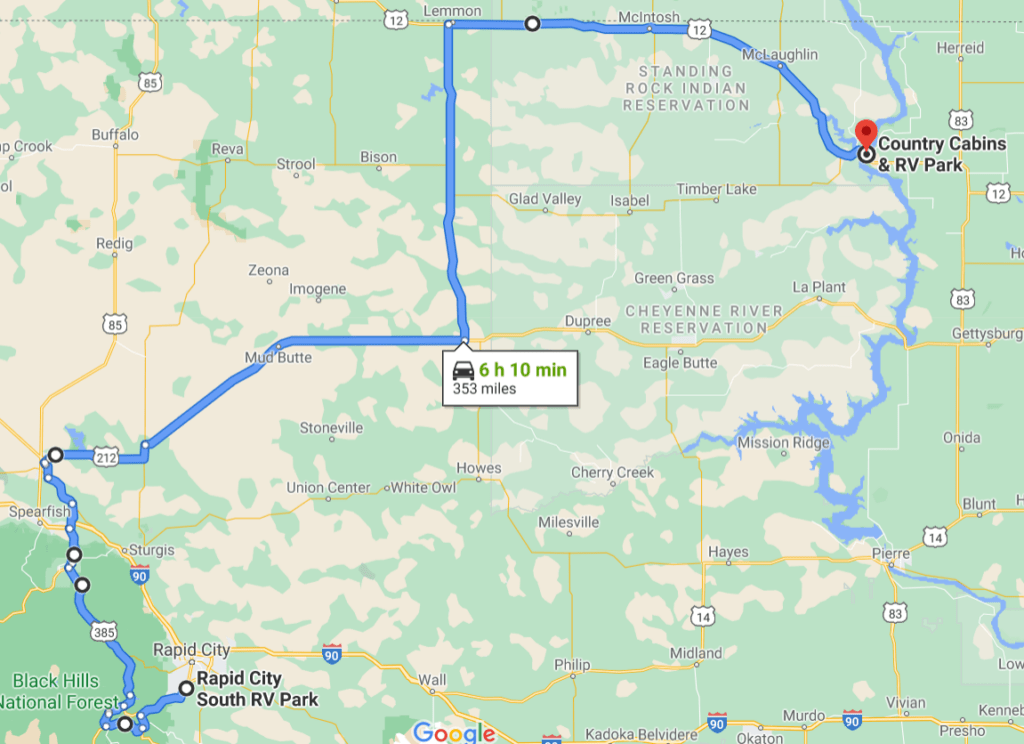

We began the day with a visit to Mt. Rushmore. This is pretty much “required” for any visitor to South Dakota.
After the Civil War, the Dakota territory became center stage of the conflict between the native peoples who had called these plains home for thousands of years, eking their subsistence from the forbidding land by hunting the bison which filled the vast grasslands, and the people of the United States who came to exploit and subdue the land and its people, destroying almost all of the bison upon which the native people depended, and replacing the native grasses with cultivated grains. It has been over 130 years since the Dakotas were admitted to the USA as states, symbolizing the culmination of the great struggle between these peoples – a conflict buried just beneath the surface of Dakotan society in a shallow grave which occasionally emits a foul reek.
Nowhere is that conflict more evident than at Mt. Rushmore in the Black Hills of far western South Dakota. Every year, thousands of outsiders like Sue and I flock there to see a magnificent memorial to four great leaders of the very people who drove the area’s original and rightful occupants from the land they consider sacred – the Black Hills into which these magnificent heads are carved.

As I got into position to take Sue’s photo in front of these giant faces, I took my sunglasses off so I could see the display on my smartphone camera without having to tilt my head, callously remarking to Sue, “Better take off these polarized lenses, because after all there’s nothing in America quite so polarizing as Mt. Rushmore.” About that time, one of the other visitors offered to take a photo of the two of us together.
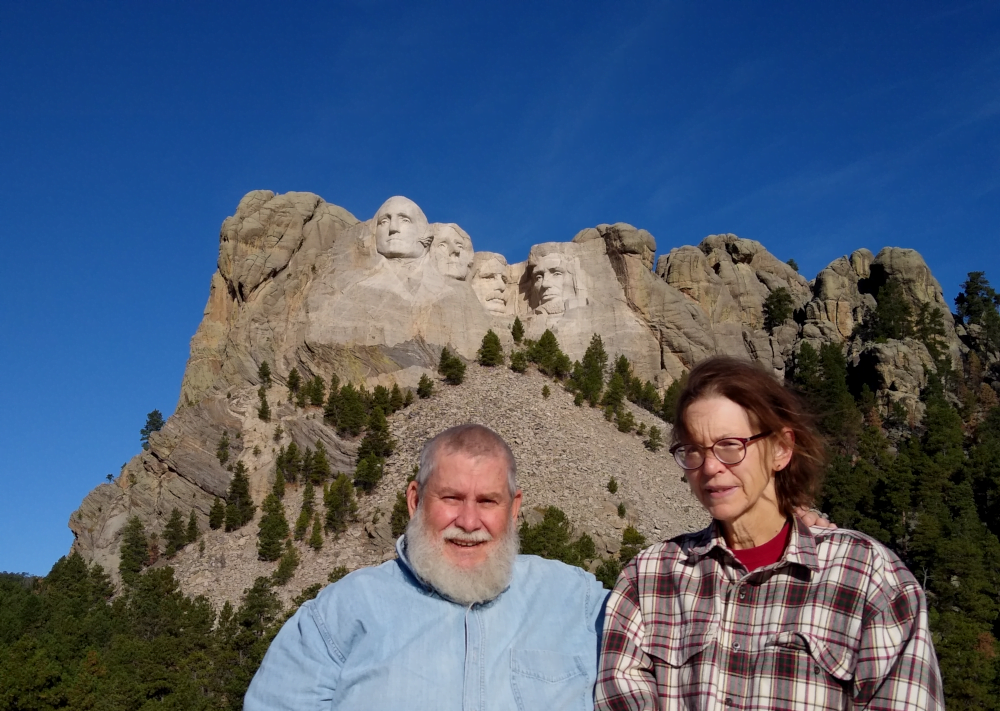
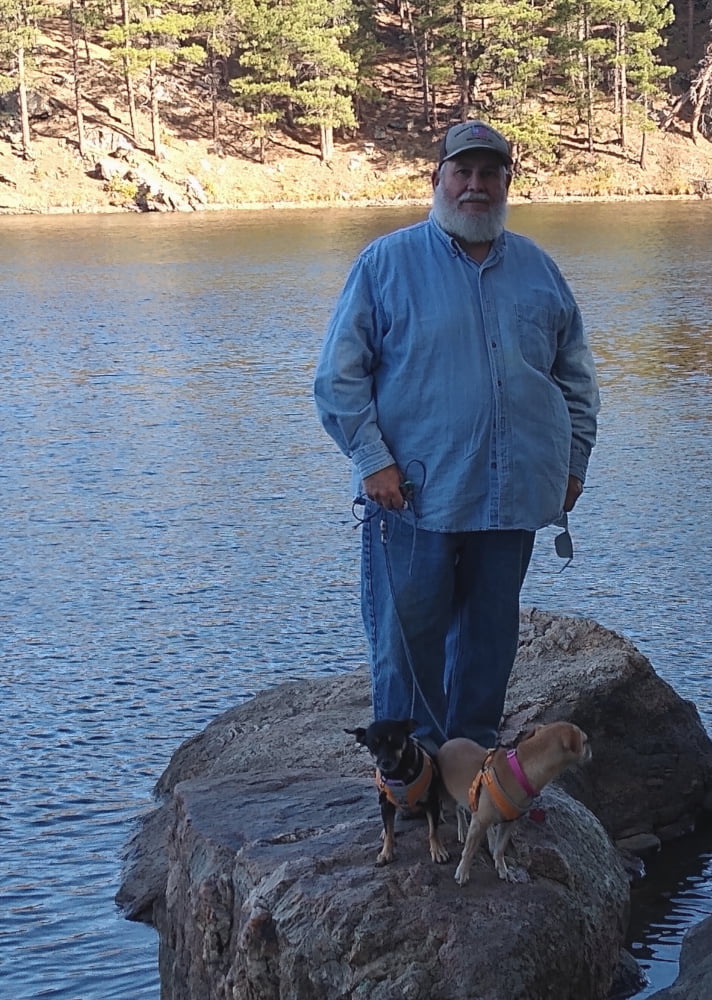
Since the doggies weren’t allowed in the sculpture observation area, we stayed only briefly at Mt. Rushmore, and drove away seeking a place to enjoy the natural beauty of the Black Hills. Even the little Horsethief Lake where we took a short hike is an example of the white man’s domination of the land. It is very beautiful, but it is an artificial lake put there by the CCC as the carvings on Mt. Rushmore were taking place a few miles away. The lake serves no real practical purpose, but was built just to appeal to the aesthetic tastes of the invaders of the land. The Lakota people consider the hills sacred and inviolable which is why the existence of the Mt. Rushmore Memorial is so prickling to them.

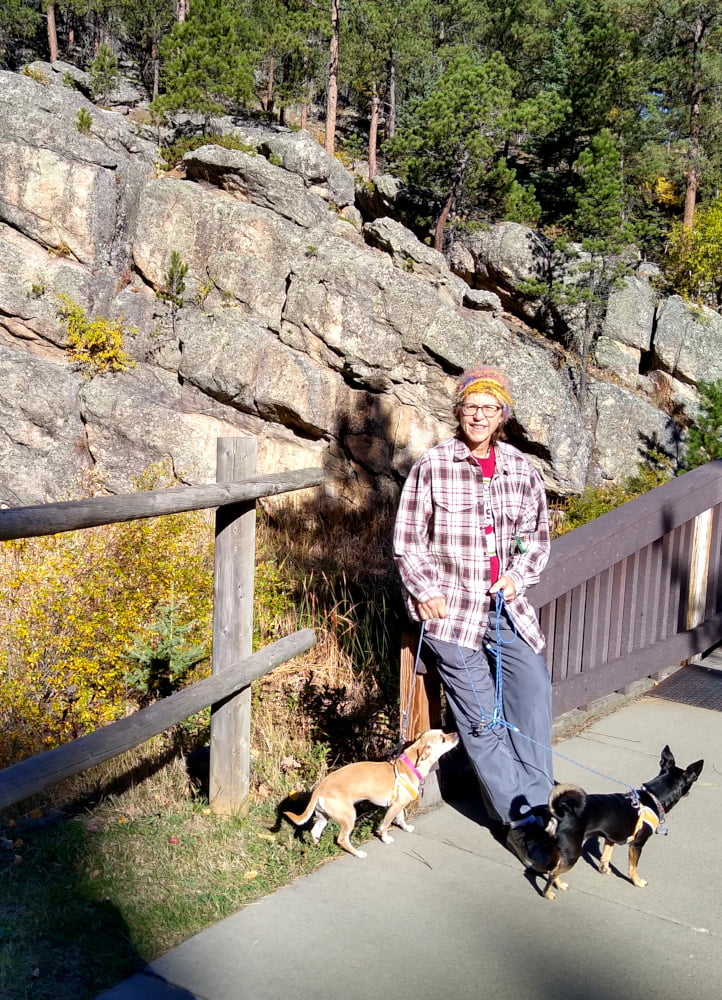
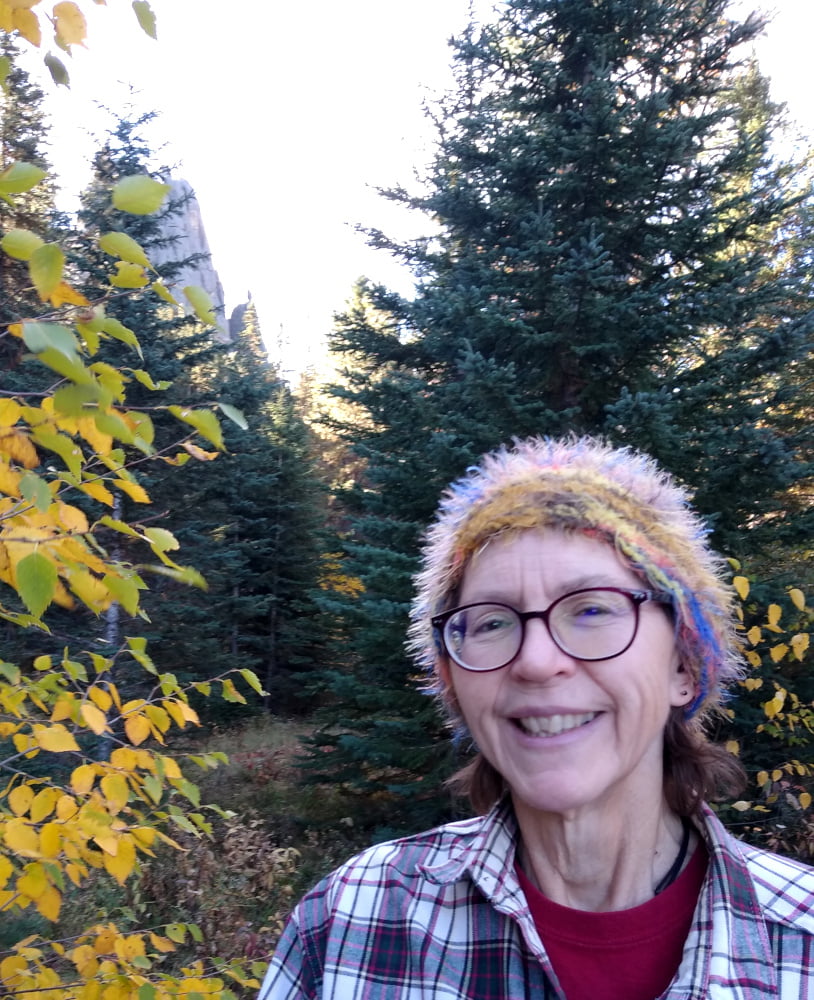
Like all of the Dakotas, the Black Hills are a land of sharp contrast. After our leisurely stroll around the beautiful Horsethief Lake, we continued through the hills making our way north through the dismal tourist traps of Hill City and Deadwood. Here we found every conceivable example of tasteless exploitation of the hills. Tragically, many of these blights on the land are empty and lifeless due to the COVID-19 pandemic, and many of the businesses there are apparently shuttered for good.
As we made our way north out of the hills back into the blaring wind on the open plain, it occurred to me that the native people worship the Black Hills themselves for the sake of their beauty, while the white usurpers worship at the altar of greed and exploitation seeking to take from the hills whatever monetary gains they may. How few are those of us who worship neither the creation nor the pleasures of this world, but rather the great Creator who made them so that we might all in turn use these gifts of His to serve and edify one another. That is the real tragedy of the Dakotas.

